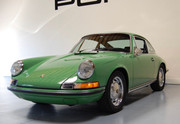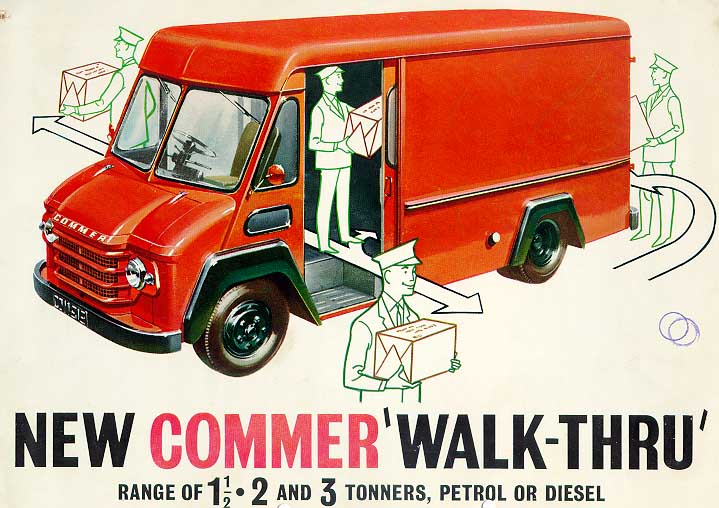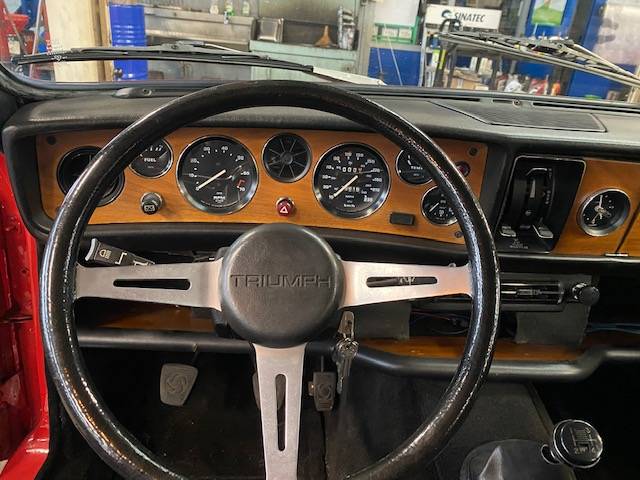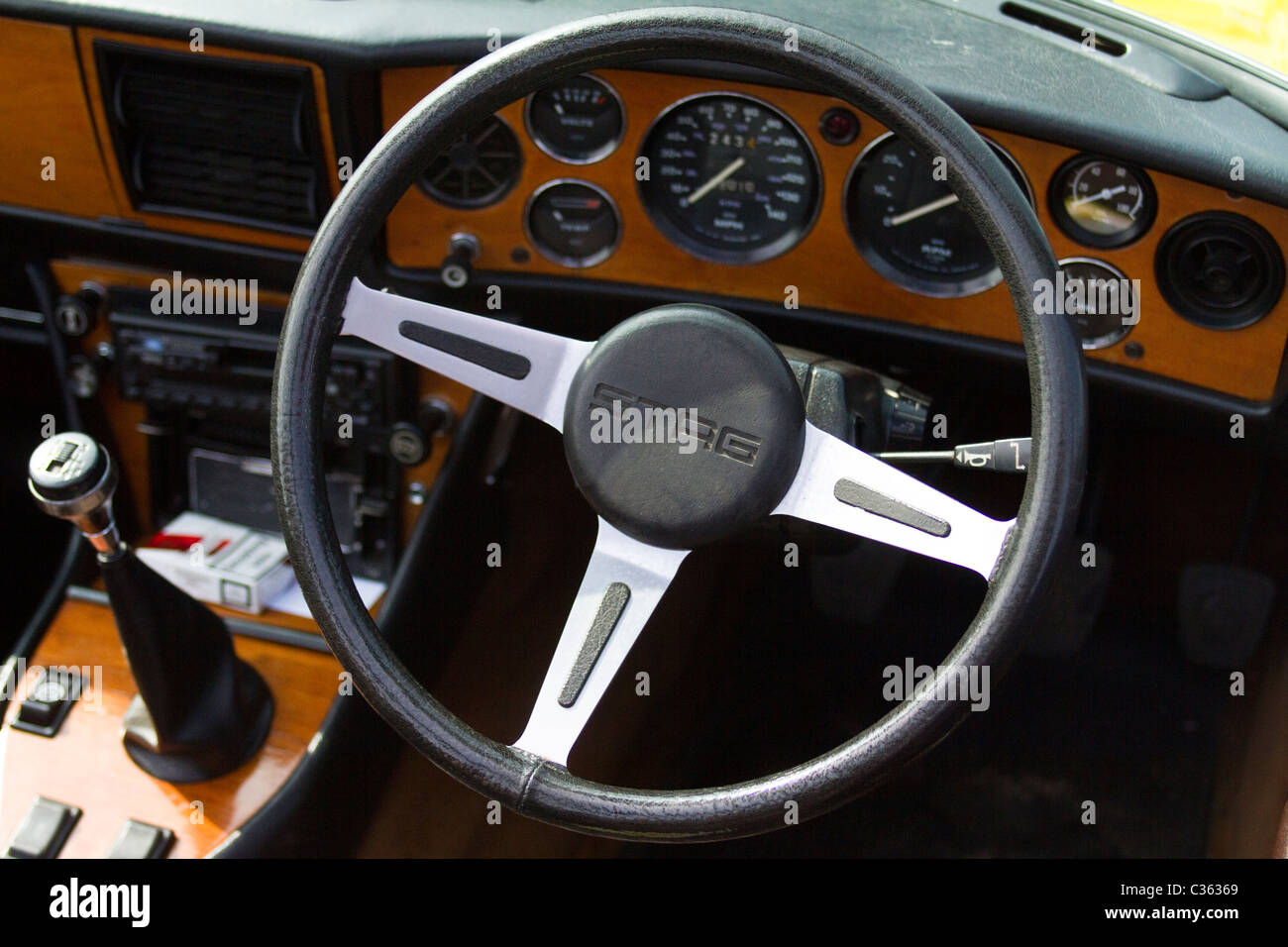Bitsa wrote: ↑Mon Nov 07, 2022 10:09 am Hazards (Don't seem to have a hazard switch currently)
Demister (I don't think I have a switch, but I think I have a heated rear screen)
I may fit a stalk for the wipers. We had a bit of an incident on while I was navigating for my dad on a classic rally in his (latterly mine, now departed) Toledo where we hit water on test and couldn't see anything. He reached for the wipers in a hurry and the knob came off in his hand
I don’t know when my 1974 Triumph Toledo 1300 “HL Special” was manufactured, but it was first registered in mid-November 1974, in the name of Mann Egerton, the local Rover & Triumph dealership, in Leigh-on-Sea, Essex. In answer to your three points listed above, please note the following about my 1974 Toledo:
• It has a heated rear window, for which the original switch was a pull switch with integral green-lensed tell-tale lamp, mounted in a bracket below the original flat-plank dashboard.
• There was no hazard warning light facility, but I gained this option when I substituted an early-model Dolomite 1850 dashboard with hazard-warning rocker-switch, between the speedometer & tachometer, below the 8-segment warning-light cluster. I think the 1975 and/or 1976 Triumph Toledos were factory-fitted with the hazard warning light facility.
• Based upon my first few years’ experiences of driving the Triumph Toledo during the late-1970s & early-1980s, I would thoroughly recommend substituting the steering-column mounted, Dolomite windscreen wiper & washer stalk-switch, with flick-wipe facility, which will make the car so much safer and more pleasant to drive. However, it’s debatable whether use of the windscreen wipers would have significantly improved visibility through the windscreen, when you plunged into standing water during the classic rally you mentioned
Board index » The Triumph Dolomite Club » Dolomite-related [Start here!] » 40+ Years With A 1974 Triumph Toledo 1300 “HL Special”
The Toledo Takes to the Water! – Early-1980s
viewtopic.php?f=4&t=29933&p=316552#p316552
Substituted Triumph Dolomite Adjustable Steering Column, Windscreen Wiper & Washer Switch and Other Associated Switch Gear – Winter 1982/83
https://forum.triumphdolomite.co.uk/vie ... 02#p335502
Substituted Early-Model Triumph Dolomite 1850 Dashboard & Instruments – March 1984
https://forum.triumphdolomite.co.uk/vie ... 20#p340529
Bodywork Colour Scheme
If you want a cheap solution to painting the Triumph Toledo then use coach paint/enamel (1 litre should hopefully be enough), that is specifically made for hand painting using a brush, cloth, sponge or mohair pad, which was how coaches and Rolls Royce cars were painted until a few decades ago. This should be much cheaper than using aerosol cans! When I get around to it, I shall probably use coach paint/enamel to over-paint my much modified & upgraded 1973 VW “1600” Type 2 Westfalia Continental motor-caravan (another family heirloom dating from early-1975), which has an unusual rear-window wiper system that I retro-fitted in 1990; adapted from a Vauxhall Astra Mk.1 estate car.
Having a car which is all-BLACK could be a major safety hazard, but many people might find an all-YELLOW car overpowering! A more aesthetically pleasing option, which also addresses the safety issues, might be a YELLOW & BLACK car. This is like my 1974 Triumph Toledo 1300 “HL Special” (a six-month old, ex demonstrator cum runabout, bought second-hand by my father in April/May 1975 as a second family car), which had been given a customised “Dolomite Sprint style” livery with Mimosa-yellow paintwork, black vinyl roof & C-pillars and satin-black sills, plus black & silver Cosmic 5½ x 13 inch alloy wheels (21 mm wheel-offset) and other accessories.
Ultimately, the black vinyl degraded, revealing areas of rust underneath. I didn’t want to repaint the roof in yellow which would have involved a lot of time-consuming preparation to get a good finish and fitting a replacement black vinyl roof would have been expensive and probably involve removing & refitting the laminated front windscreen.
Instead of either of these, I opted to paint the roof & C-pillars plus the A & B pillars and all the window surrounds with brushable, dimpled/hammered-finish, black Hammerite enamel, which very-effectively camouflages underlying imperfections but also provides a durable, attractive, low-maintenance finish. I had previously painted the quasi-vertical portion of the boot-lid and rear lamp-unit surrounds with this paint.
Over the years, I had found that the sills and lower sections of the doors were very susceptible to stone chipping. For me, the ideal colour scheme was the original Mimosa yellow (or similar shade) as the dominant colour with “dimpled/hammered-finish” black Hammerite (subject to chip-resistance requirements in the lower portions, where Hagmans Carosol® Body 500 black rubberoid paint would probably be used instead) covering the following areas:
• roof & gutters
• rear window surround, down to the leading edge of the boot lid
• front windscreen surround, down to the trailing edges of the bonnet lid & front wings
• side window surrounds, down to just below where the removed horizontal bright-work would have been
• all door pillars (i.e. A, B & C pillars), down to just below where the side windows’ removed horizontal bright-work would have been
• sills below the doors
• bottom of all doors, up to the lower swage line
• bottom of rear, vertical side panels, up to the lower swage line
• bottom of front, vertical side panels, up to the lower swage line forward of the front doors and around the wheel-arch flares to the front valance
• vertical portion of the rear boot-lid & adjacent rear-light panels, up to where the V-section bright-work trim, would clip over the spot-welded seams
Hence, the car is about 60% yellow & 40% black. I have yet to determine what would be the best colour scheme for the MG 2000 Maestro 5½ x 15 inch cross-lattice style alloy wheels (31 mm wheel-offset), when fitted to a yellow & black, four-door 1974 Triumph Toledo “HL Special”. The main options I am considering are: (a) all black, (b) silver & black, (c) black & silver, (d) yellow & black, and (e) black & yellow. With such a large wheel, the existing all-silver wheel would probably be over-powering and looks out of place with the car’s colour scheme.
Lighting Systems
Unless they were a significant improvement over the H4 headlamps and relatively cheap, I had no intention of substituting LED headlamps, but I was interested in finding out what was available, so I could document this as one of the options for possible headlamp upgrades.
I have had Lucas “Brighteyes” 60/55W H4 headlamps on my 1974 Triumph Toledo 1300 “HL Special” since August 1976, which are a vast improvement over the original factory-fitted 75/70W sealed-beam units. The further upgrades that I did make during the 1980s, was to retro-fit 7 inch diameter, Lucas 20-20 homo-focal rally fog lamps and auxiliary driving lamps, with 55W H3 quartz-halogen bulbs (professional rally drivers used 100W H3 quartz-halogen bulbs) which made a tremendous difference when driving on unlit cross-country road at night.
In late-April or early-May 1984, I sent an enquiry letter to the RAC, about the technical and/or legal implications of substituting higher-wattage quartz-halogen bulbs into headlamps, fog lamps & auxiliary driving lamps. In the third of three reply letters during May to July 1984, from M. W. Bussey (Staff Engineer), at the RAC Motoring Services, National Technical Centre, he stated the following, regarding reduced life expectancy of a lamp’s reflector, if significantly higher-wattage bulbs were used.
« Obviously, from a technical view point, the greater wattage outputs by a head lamp unit to a larger extent, the shorter the service life will be of that unit, namely its reflector. »
Sometime during 1988/89, I substituted 100/80W H4 quartz-halogen bulbs with P45t mounting flanges, into my 1973 VW Type 2’s original factory-fitted Hella headlamps, but by mid-1991 it became apparent that the headlamp reflectors were losing their lustre, but I don’t know whether this was attributable to the higher bulb wattage or just the long-term effect of age.
Board index » The Triumph Dolomite Club » Dolomite-related [Start here!] » 40+ Years With A 1974 Triumph Toledo 1300 “HL Special”
Substituted 7-inch Lucas 20-20 Homofocal Front Fog Lamps – January 1983
https://forum.triumphdolomite.co.uk/vie ... 30#p335684
My white Toledo, and my Dad's red Toledo with a 1500 twin carb engine.

The photographs of the white and dark-red Toledos suggest that they were travelling at high speed around those bends (one or more tyres close to lifting off the road!?!) on wet road surfaces and/or had worn suspension dampers and/or lacked the easy bolt-on Dolomite Sprint or Dolomite 1850 front & rear suspension anti-roll bars, that have been on my Toledo since late 1982.
Board index » The Triumph Dolomite Club » Dolomite-related [Start here!] » 40+ Years With A 1974 Triumph Toledo 1300 “HL Special”
Retro-Fitted Triumph Dolomite Sprint, Front & Rear Suspension Anti-Roll Bars & De-Cambered the Front Wheels – Summer 1982 & Winter 1982/83
https://forum.triumphdolomite.co.uk/vie ... 98#p335498
The spokes of your Dolomite three-spoke steering wheel appear to be highly polished; being far more lustrous than mine, whose satin-chrome finish caused more than enough problems with extremely uncomfortable reflected glare from the sun on many occasions. I much prefer the padded 14½ inch Dolomite steering wheel (easier to use the two steering-column mounted stalk switches) to the original 16 inch Toledo steering wheel, but I shall probably need to paint the spokes with satin-black paint or hammer-finish, black Hammerite paint!
Dundee (in Scotland, not in South Africa; north of Rourke’s Drift!) Residence
We lived at No. 154 Liff Road on the corner with Pitalpin Street, opposite Kelby’s scrap-metal merchants, just a short walk from the Whip Inn and the local grocer’s shop. Our garden backed onto Muirison’s market garden (grew raspberries amongst other things), but that was later redeveloped as a housing cul-de-sac, after we left for Canvey Island, Essex in mid-1965.
https://www.tspc.co.uk/1-Bed-End-Terrac ... ee-DD2-2TU
https://zestate.co.uk/address/154-Liff- ... U/7236761/
It was just a short walk to the Kingsway, NCR – National Cash Register factory and the Timex watch factory, behind which myself and other children went tiddler fishing for sticklebacks, minnows & tadpoles. Although Liff Road School was very nearby, we lived on the “wrong” side of Liff Road, so were not within their catchment area! I don’t know why I didn’t qualify to attend the next nearest school, but it was probably for similar reasons. Our typical leisure haunts were nearby Camperdown Park (featured an enormous monkey-puzzle tree & children’s zoo), Riverside Drive running alongside the airstrip (to monitor progress on building the Tay Road Bridge) Monefieth and Carnoustie.
My parents and I last visited Dundee in 1982, when we made the pilgrimage to St. Andrew’s University in Fife & Queen’s College in Dundee, for my father’s 20th anniversary of graduating from medical school; having started his medical studies in October 1956 at the age of 27¼, when I was 8½ months old. During his medical training, my father at worked at DRI - Dundee Royal Infirmary, King's Cross Hospital and Maryfield Hospital, as well as completing a one-year general-practice GP traineeship with Bruce Robertson, a local GP. This was all before the new, large Nine Wells Hospital was built several years after we left Dundee!
We also visited our former cottage, together with its occupants and neighbours, all of whom my family had known since mid-1956. Mum also had friends in Broughty Ferry, where she had worked as a district nurse, who in common with virtually all district nurses in those days, did her rounds on a bicycle in all weather conditions.
Sometime in 1988/89, I was asked by the trading standards office in Stornoway, whether I could attend the sheriff’s court there as an expert witness, to testify regarding TOG values and associated test results for continental quilts, but I suspect that my then employer’s fees (£55 per hour) plus expenses (travel & subsistence) might have inhibited them proceeding with this. During the 1990s economic recession, I travelled twice by overnight sleeper trains from London to Aberdeen (Robert Gordon University, Department of Architecture) and Glasgow (Building Research Establishment, Scottish Laboratory in East Kilbride) for job interviews, but nothing came of them.
Out of curiosity, I initiated an Internet search a few years ago re Ancrum Road Primary School and was surprised to discover that it had a website, which mentioned that they had refitted one of the class rooms as it had been during the Victorian era. When I was there, the classroom layout was probably not much different and the tawse (two or three tongued leather strap) was used quite liberally by class teachers, to administer punishment for relatively minor infractions, such as not paying attention, talking in class, scraping a chair leg or “poor” academic performance. I shudder to think what fate befell pupils, who committed more serious infractions and were referred to Mister Cameron, the headmaster!?!
www.ancrumroad.ea.dundeecity.sch.uk
https://www.bbc.co.uk/news/uk-scotland-39044445
https://www.bbc.co.uk/programmes/b08gcxb6
https://www.bbc.co.uk/programmes/p04qz9s8
For those who have never sampled the delights of Dundee (was in Angus when I lived there!), Tayside, Scotland, (home to Antarctic explorer Captain Scott’s ship “Discovery”), it lies on “Tour 12 – Raspberry Fields Forever”; one of 25 car tours for the independent traveller, in The AA Best Drives – Scotland, 4th Edition, 2005, ISBN 10: 0-7495-4371-X and 13: 978-0-7495-4371-6.
“Tour 12 – Raspberry Fields Forever” is a half-day, 120 mile tour, circling the Sidlaw Hills, travelling from Dundee, through or via Broughty Ferry, Carnoustie, Muirdrum, Arbroath, Lunan, Montrose, Brechin, Forfar, Glamis, Meigle, Alyth, Blairgowrie, Dunkeld, Perth & Glencarse, back to Dundee.
















